Shock Corridor (1963)
“Tell me about her braids.”
|
Synopsis: |
|
Genres, Themes, Actors, and Directors:
Response to Peary’s Review: Peary’s review nicely highlights the unexpectedly hard-hitting nature of Fuller’s screenplay, which is all the more surprising given its obvious B-movie context and production values. Many viewers will find themselves groaning during the heavy-handed opening sequence between Breck and Towers (his “stripper girlfriend”), as Towers laments Breck’s “self-serving” motives for feigning insanity, and shrills some humorously hysterical dialogue: “You’re on a hopped up, lunatic stage — get off it! Don’t be Moses leading your lunatics to the Pulitzer Prize!” However, once Breck actually enters the asylum and begins encountering his fellow inmates, the tone immediately becomes at once more serious and more bizarre. The three witnesses Breck is specifically interested in interrogating are all deeply damaged souls, indicative of all that’s most secretly corrupt about American society. The most memorable is undoubtedly the character played by Hari Rhodes — an African-American who, after a failed attempt to integrate into an all-white university, has internalized extremist racist attitudes to the point where he believes he’s white; he dons a Klan hood, harasses a fellow African-American who he claims is “after his daughter”, and carries around an inflammatory sign saying, “Go Home Nigger”. Best and Evans are also haunting in their portrayals as (respectively) a brainwashed Korean War vet and a guilt-ridden nuclear scientist, and Breck’s roommate — the overweight “Pagliacci” (Larry Towers) — adds yet another bizarrely damaged character to the milieu. Further highlighting the surreal nature of Breck’s experience is Stanley Cortez’s “shadowy cinematography”, as well as the strategic use of special effects, including Towers appearing superimposed over Breck’s resting head (taunting him in her stripper outfit), and the photographing of “midgets at the end of the corridor set so that it would appear to be longer than it was”; close inspection quickly reveals that the same sequence of the midgets pacing back and forth was looped many, many times, but it’s still effective. This utterly unique cult favorite is one film fanatics won’t want to miss seeing at least once. Redeeming Qualities and Moments:
Must See? Categories
(Listed in 1001 Movies You Must See Before You Die) Links: |
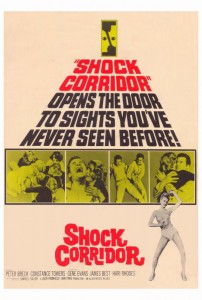
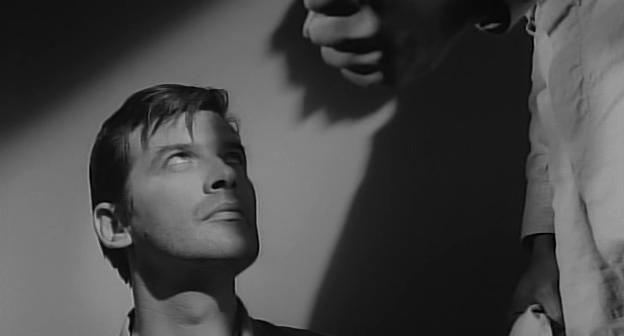
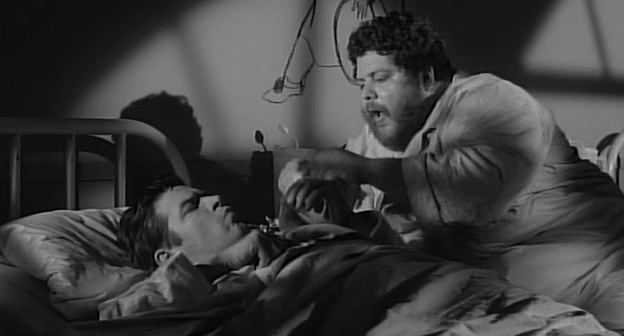

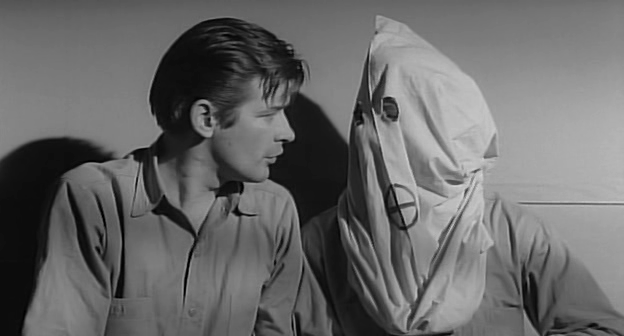
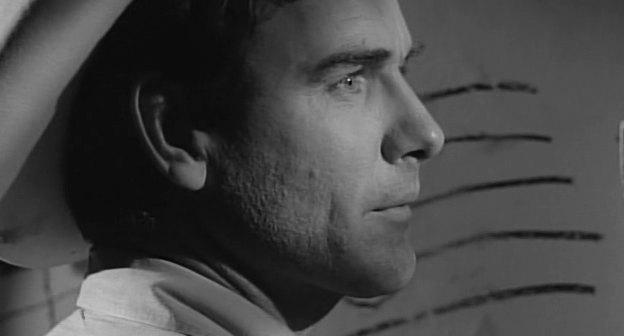
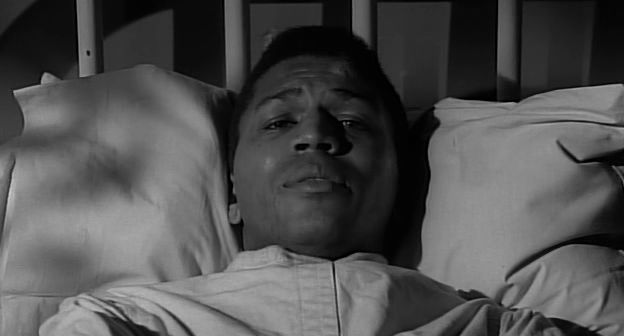
One thought on “Shock Corridor (1963)”
Not a must – not unless you are a real Fuller fan and are determined to see all of his work. I am a Fuller fan and have probably seen all of his films – but this one is downright sloppy and, on a revisit, kind of a bore, actually.
The main problem with ‘SC’ is that it’s just so difficult to buy into most of it, really; the premise is very shaky, and the script’s construction is haphazard to say the least. Very little of it comes together in a satisfying manner. (Breck’s continuous drooling over the possibility of winning the Pulitzer Prize, by the way, only serves to pinpoint him as possibly one of the worst journalists ever.)
The assessment given here accurately points out the film’s main strength: the three performances by supporting players Best, Rhodes and Evans. The ‘short stories’ that make up their roles give these guys something to play, at least. Still, the stories do not tie-in to the main narrative satisfactorily.
For all of its ‘sensationalism’ (which is minimal, really), the film drags horribly – and, worse, there seems little indication that Fuller has sufficiently researched the day-to-day routine of an asylum. (What eventually happens to Breck’s character seems to come out of nowhere plausible.)
I do hesitate to ‘go after’ a film that has firm cult status in order to bring it down – but I think, overall, that ‘SC’ is simply a mess.